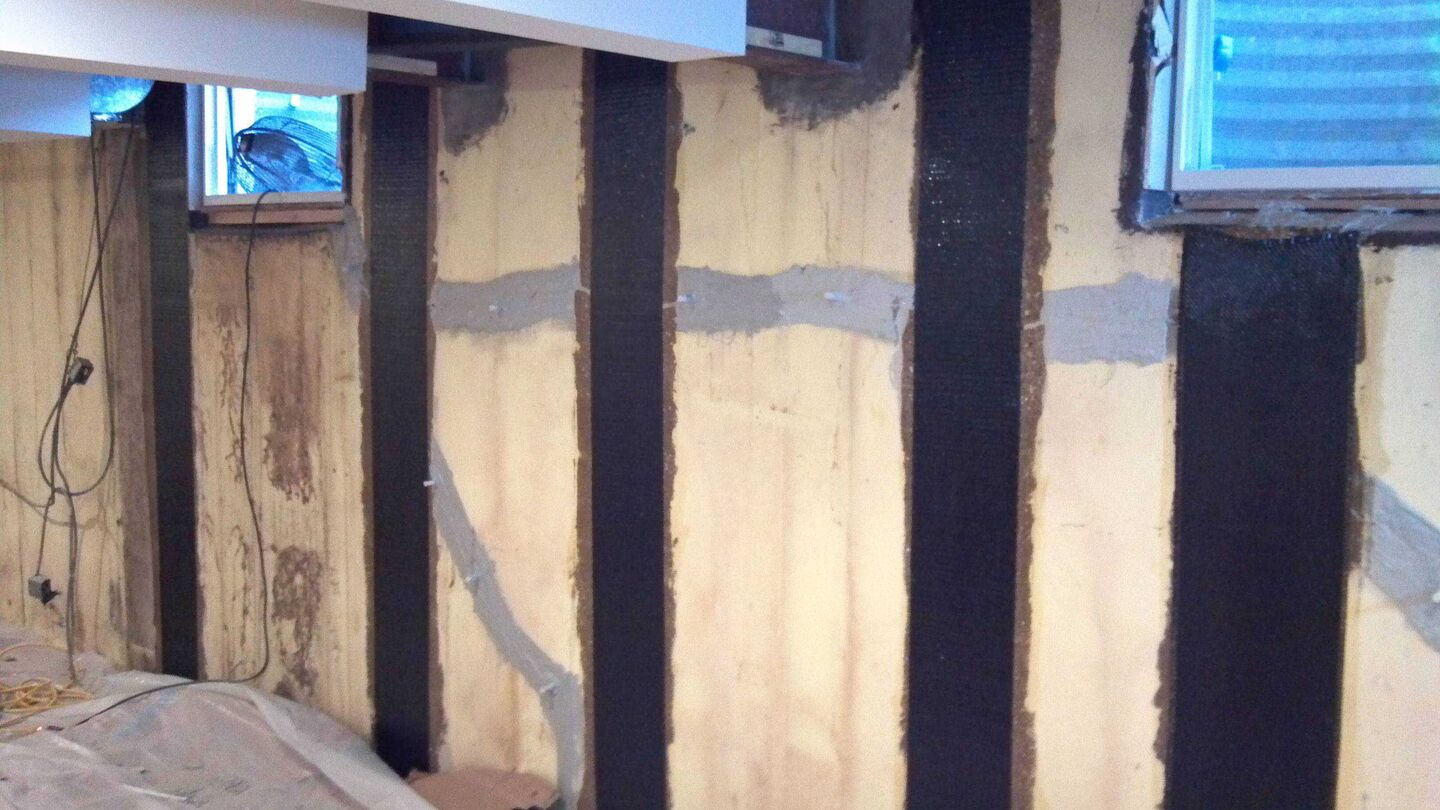Chicago Foundation Repair with Carbon Fiber

Chicago’s residential foundations come in various materials – poured concrete, concrete block, brick and stone. There’s even a type of foundation material, though long out of use, that was once common to the Midwest – “telephone tile,” a webbed block of terra cotta was also used as an underground wiring conduit.
Regardless of what they’re made of, Chicago foundations have one thing in common – they’re all susceptible to damage, ranging from minor to severe. The most frequent and, thankfully, most minor is non-structural damage, typically small cracks that can lead to basement seepage but don’t present a threat to structural integrity.
The really worrisome damage happens when water outside the foundation causes lateral pressure to crack and move foundation walls or the lack of water in the soil underlying the foundation causes it to settle or drop. This kind of damage affects not only the structure of the foundation but of the house itself and can be incredibly destructive if not caught and repaired in its early stages.
When a foundation drops or settles severely, it must be repaired by a process called “underpinning,” where load-bearing systems are constructed below the foundation and are used to raise the structure back to level and keep it there.
When a residential foundation suffers with walls that are bowing, bulging or rotating inward, there are several methods of repair that can range from simple and unobtrusive to complex and highly noticeable, depending on several factors, including how quickly the homeowner spots the problem and takes action to repair it. One of these methods stands out above the rest.
Carbon Fiber for Chicago Foundation Repair
The most common type of foundation in Chicago is one constructed of poured concrete. Running a distant second is concrete block; the other forms of masonry foundations are found occasionally.
When lateral pressure or settlement damages a poured concrete foundation wall, it will typically crack near the upper corners and in the middle and will begin to tip in from the top, a movement known as “rotation.” Left unrepaired, the wall will separate from the structure above causing cracking and other symptoms in the house above.
When the same forces work on a concrete block wall, it will begin to crack in the mortar that hold the blocks together. The wall will begin to move inward in the middle, creating a bulge or bowing in the same spot, top to bottom. Eventually, blocks will begin to shift inward individually and the strength and integrity of the wall will be compromised.
There are several ways to repair a damaged foundation wall, including using steel I‑beams to stabilize it and shoring up the house, tearing the wall out and rebuilding it. Modern technology, however, has introduced a method of repair that can be done quickly at a reasonable cost and results in a finished job that is barely noticeable. Carbon fiber strips, properly placed and applied, will ensure the wall’s stability for the foreseeable future.
To repair a damaged foundation wall with carbon fiber, a careful inspection is made and engineering principles are applied to determine the optimal number and placement of strips.
When installation day arrives, the installers mark out the placement on the wall and grind down the wall surface to smooth it. They then apply a coating of industrial epoxy and embed a 12-inch wide woven strip of carbon fiber into the epoxy, rolling it down to ensure a tight bond. The strips are usually applied floor-to-ceiling but may also be placed at an angle to stabilize severe cracks.
Once the carbon fiber strips are in place, steel angle iron is installed at the top of each, bolted to floor joist, to help prevent further movement.
When the epoxy has fully cured, the epoxy repairs can be painted over and will be covered easily by a regular 2” x 4” finish wall. The repair is absolutely permanent and requires no maintenance or adjustment by either contractor or homeowner.
Carbon fiber may be used to repair any wall, concrete or masonry, which has deflected, or moved, two inches or less. Further movement requires repair with steel, which is more obtrusive and costly than carbon fiber – good reasons for a homeowner to act quickly.
Of course, carbon fiber foundation repairs require skill, experience and expertise to be done correctly and a homeowner with foundation wall movement should seek out a Chicago foundation repair contractor that offers all three. At U.S. Waterproofing, our foundation repair experts rely on engineering data to plan the optimal repair at a fair price with the minimum of inconvenience. Why not ask for a free consultation?




